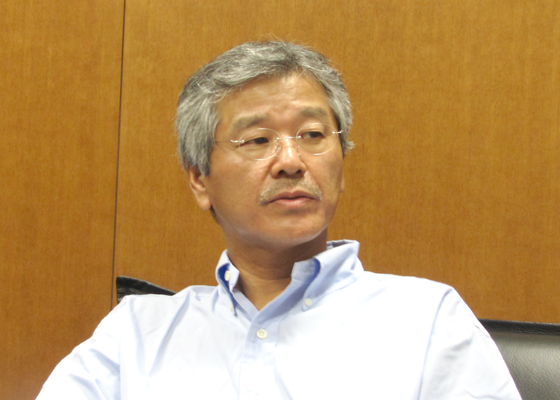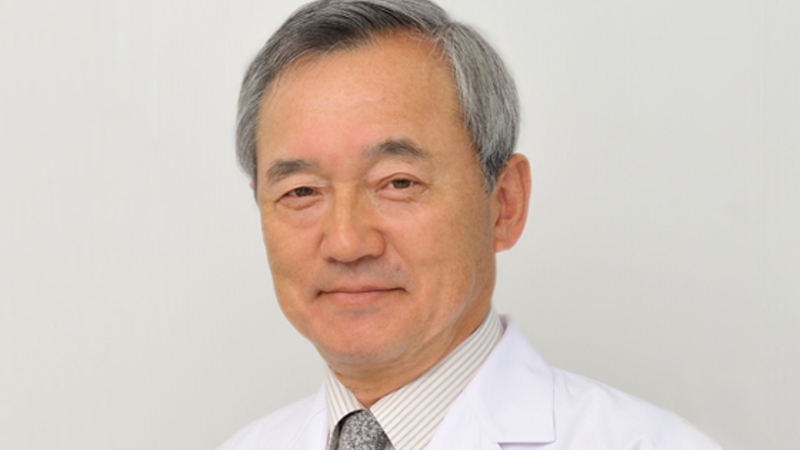Dr. Osamu Kato, a pioneer and inventor of techniques of percutaneous coronary intervention for chronic total occlusion (CTO-PCI), is one of the most respectable interventional cardiologists, not only in the country but all over the world. In this two-part interview, TCROSS NEWS learns how and why his CTO-PCI techniques came to form through his personal history.
Profile: Dr. Osamu Kato (Part 1)

What made you decide to become a doctor?
Actually, I had no interest in becoming a doctor at all when I was a child. Rather than become a doctor of my own volition, I went to medical school on the recommendation of my parents since I had relatives who were doctors. I always thought I would change my field once I entered university.
Please tell us how you came to specialize in cardiovascular medicine.
I didn’t have any particular interest in cardiovascular medicine, however when I was a student, I thought that I would be better suited to cardiovascular rather than gastrointestinal internal medicine.
I was born in the Ehime Prefecture, and after graduating from university in Osaka, I returned to my hometown. My brother was working as the administrative director of a local hospital and an assistant professor in the Second Department of Internal Medicine at Ehime University, so I joined in 1978 since it specialized in cardiology (hypertension).
Please tell us about your encounters with catheterization.
I had seen catheterization several times when I was a student, but I wasn’t interested in it at all. Even if I had wanted to become a catheter specialist, the number of facilities where I could train was limited, and unlike today, it was difficult to move from one facility to another. The door was closed.
In those days, it was common to be assigned to a specific research group after two years of training in general internal medicine, but since Ehime University's medical school had just been established and the number of medical staff was limited, we were assigned to our respective groups as soon as we joined. Without warning, I was suddenly assigned to the Catheter Group where I was mainly helping with electrophysiology research. Since there was a shortage of staff in the medical department, I couldn’t receive any clinical training, and on top of that I was forced to work from morning to night doing all the work that would now be done by the co-medical staff.
I also really wanted to start my own practice immediately after finishing my clinical training, so I felt the need to get through it as quickly as possible. But after a fight with my professor, I decided to drop out of Ehime University and return to Osaka. It was then that I was introduced to Minami Osaka Hospital by a friend.
Minami Osaka Hospital had many emergency patients and was the ideal facility for training. The internal medicine department was mainly focused on digestive organs, and there were no doctors whose main practice was treating cardiovascular patients so, since I had been a member of the cardiology department at Ehime University, I was put in charge of cardiology. At that time, it was common to mainly focus on the treatment of heart failure and valvular disease, so I often performed echocardiography.
After that, catheterization became more commonplace, so I received training at Kinki University for about a month before I began practicing. I did everything from digestive organs to circulatory organs. As for catheterization itself, there had already been cases of head and abdominal angiography being performed, and since there were many patients with liver cancer at Minami Osaka Hospital, it meant there were many cases of trans-arterial embolization (TAE), so all of this experience helped me to compound my knowledge of catheterization further.
Please tell us how you became interested in coronary artery disease and interventions.
At the time, there were only a limited number of facilities with cineangiography equipment, and I certainly had no expectations that the field of catheterization would develop in the future the way that it has. I started performing coronary angiography (CAG) at Minami Osaka Hospital, and since I had been involved in many other types of angiography tests before, I didn’t encounter any particular obstacles since they are all technically the same.
Soon after, a cardiac surgeon came to Minami Osaka Hospital and taught me about catheterization and cardiovascular care in general, all the while the number of patients with cardiovascular diseases was increasing in Japan. It was a coincidence that I became involved in catheterization just as cases were rising.
On average, Minami Osaka Hospital had 60 to 80 cases of acute myocardial infarction (AMI) per year and as the number of cases gradually increased, the cardiology group grew to three doctors. I kept asking the hospital to allow us to become independent division, but instead they invited a cardiology group from Osaka Medical College, so I decided to leave. When I was at Minami Osaka Hospital, I had sent patients who needed CABG and later PTCA to Dr. Kobayashi at the Osaka Medical Center for Adult Diseases (now the Nakamura Clinic), so he was the one who introduced me to Sakurabashi Watanabe Hospital.
Sakurabashi Watanabe Hospital has a long history of CAG and was the second facility in Japan to introduce the Philips Cardiodiagnost. Dr. Ogitani was performing catheterization when it was first introduced, but after he left, the catheterization room was run by residents. Since they were looking for a doctor who could do CAG, I was hired on a two-year contract.
Interviewed in 2011
ご注意 当サイト内の全ての記事と動画の転載・転送はご遠慮ください。なお、法律上保護されたコンテンツの無許可の転載、複製、転用等は、当該コンテンツの権利者等から損害賠償請求その他の法的手続を申し立てられ、事案によっては処罰される可能性、また、故意にそれらを受け取った場合も同様の措置を受ける可能性がございます。ご不明な点がございましたら当社までご連絡ください。




